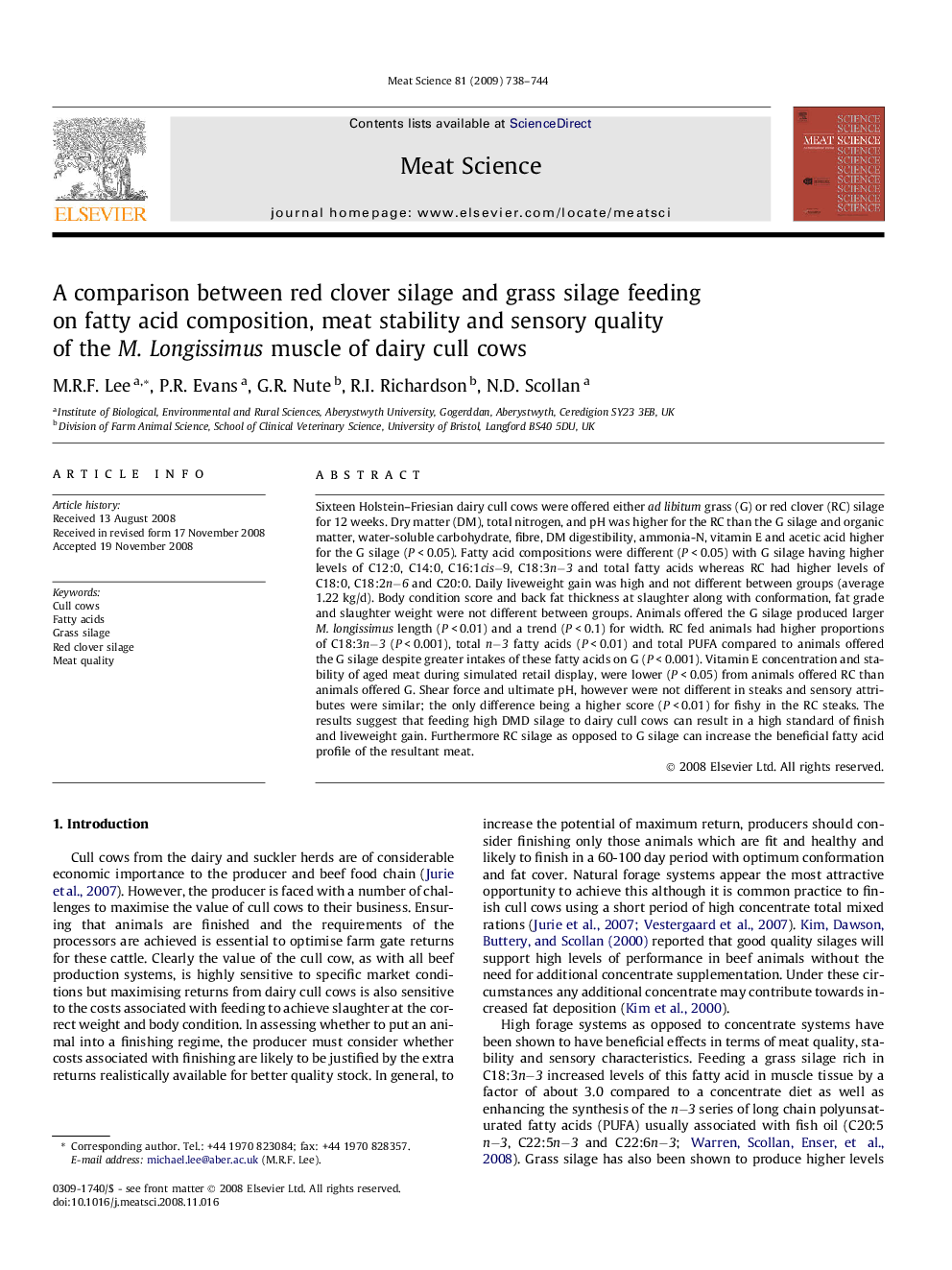| Article ID | Journal | Published Year | Pages | File Type |
|---|---|---|---|---|
| 2450507 | Meat Science | 2009 | 7 Pages |
Sixteen Holstein–Friesian dairy cull cows were offered either ad libitum grass (G) or red clover (RC) silage for 12 weeks. Dry matter (DM), total nitrogen, and pH was higher for the RC than the G silage and organic matter, water-soluble carbohydrate, fibre, DM digestibility, ammonia-N, vitamin E and acetic acid higher for the G silage (P < 0.05). Fatty acid compositions were different (P < 0.05) with G silage having higher levels of C12:0, C14:0, C16:1cis−9, C18:3n−3 and total fatty acids whereas RC had higher levels of C18:0, C18:2n−6 and C20:0. Daily liveweight gain was high and not different between groups (average 1.22 kg/d). Body condition score and back fat thickness at slaughter along with conformation, fat grade and slaughter weight were not different between groups. Animals offered the G silage produced larger M. longissimus length (P < 0.01) and a trend (P < 0.1) for width. RC fed animals had higher proportions of C18:3n−3 (P < 0.001), total n−3 fatty acids (P < 0.01) and total PUFA compared to animals offered the G silage despite greater intakes of these fatty acids on G (P < 0.001). Vitamin E concentration and stability of aged meat during simulated retail display, were lower (P < 0.05) from animals offered RC than animals offered G. Shear force and ultimate pH, however were not different in steaks and sensory attributes were similar; the only difference being a higher score (P < 0.01) for fishy in the RC steaks. The results suggest that feeding high DMD silage to dairy cull cows can result in a high standard of finish and liveweight gain. Furthermore RC silage as opposed to G silage can increase the beneficial fatty acid profile of the resultant meat.
